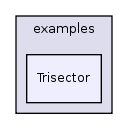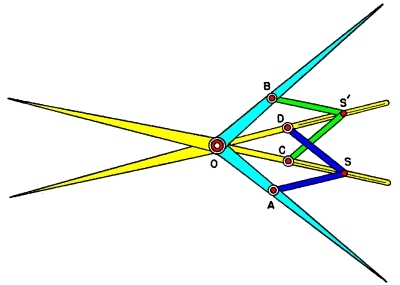

|
|
|
Trisector Directory ReferenceAngle trisector. More...
Detailed Description
IntroductionAngle trisection is the division of an arbitrary angle into three equal angles. It was one of the three geometric problems of antiquity for which solutions using only compass and straightedge were sought. The problem was algebraically proved impossible by Wantzel in 1836. A variety of mechanisms have been devised for the solution of the trisection problem. Some of these mechanisms draw the curves that aid in the solution of the Trisection equation; others solve the equation directly, or are applicable to the immediate division of the angle into three equal parts. An example of the latter sort is "Laisant's Compass", shown in the figure above. It was proposed by M. Laisant in 1875 [Brocard 1875], and is composed of four straight bars hinged together at one point and forced to make equal angles with each other. See [Yates 1941] for an interesting review of the trisection problem. The benchmark is chosen to illustrate cuik's performance on problems that are unsolvable by ruler-and-compass solvers. While it is true this linkage can be simulated with dynamic geometry software like Cinderella or Sketchpad, the resulting construction can only solve the reverse problem, angle triplication, and cannot sistematically trace all branches of the linkage motion. GeometryThe particular trisector we use has the folowing sizes:
FormulationsThis directory includes the following Trisector mechanisms:
References
| ||||||||||